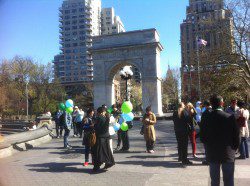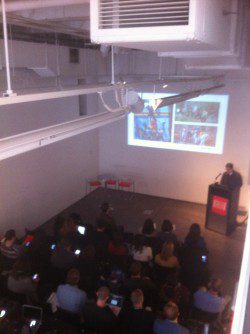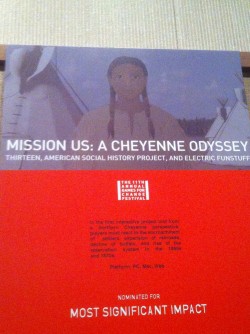Everything Action At Games For Change

Our typical convention scene usually covers all things comic, horror and gaming. If there is an event that involves things that bleed, explode, frighten or need super heroes, we’re there to see it happen. But this time we were invited to see what the other end of the convention spectrum looks like. Games For Change is all about games that improve lives and advocates for social change. Who are we to refuse an invite to see some innovative games that might change the world?
Zach and I have attended gaming conventions over the years (Zach’s most recent visit to PAX East 2014) and at a typical con, we are accustomed to being bombarded by marketing; loud music, free table swag, sweaty cosplayers and waiting in long lines demos. Games For Change is none of that. (No random booth/table that sells weird and dull weapons).
Games For Change has been going over for over ten years, and it’s goal is to highlight the year’s most innovative and creative games created by various individuals and organizations, and gather various speakers to discuss improving education. Before I attended, my initial thoughts were at best, this festival could show me what kind of uses future gaming technology can be applied to. At worst, this was going to be like a weird PTA meeting.

I attended the Thursday session of the festival, and arrived for one of the first activities of the day, the outdoor event for “Feed: A Massive Outdoor Game to Combat World Hunger“. This game involved the use of a device with GPS, and it simulates the transport of food resources from one point of the world to another. The “player” moves around the real world with their device in hand and avoids virtual obstacles in order to complete the transport. When you were done playing, you got a snack.
I made my way into the NYU Architecture building where mini talks were held. Various speakers talked about their experience turning games into learning tools and what kinds of applications they think children will connect with. There were representatives for “Daniel Tiger’s Neighborhood” who talked about the kinds of mini games they have on their website and what design choices they used for young children to focus on learning a task. To adults, these meaningless mini games give off no sense of rewards, but to a child hearing and seeing the character cartoon dance around because you knew the color blue is the same as defeating your first dragon in Skyrim.

In the lobby of the Skirball Center various games were set up for anyone to go play. These games were nominated for various awards at Games For Change and one of the most recognizable was Papers, Please, a game that has subtle lessons mixed with arcade fun gameplay. Not everyone can make a game about immigration duty seem fun, but Lucas Pope nailed it with this one. 
After that, I played some Gone Home. I’ve seen Let’s Plays of this game, some with hilarious commentary to go along with the exploration. There isn’t any big game play pay off that happens. You move around an house, read notes, listen to messages and explore for clues to find out why no one is home.

Here’s one with commentary by Robbaz.
Next up, I played a round of Mission US, a game where the player must make important decisions that will affect the survival of an Native America tribe. If you are familiar with the history of the Native Americans, you can predict what are most likely the correct choices, but this game doesn’t have much room for exploration. You make a decision and see what the outcome is. Do not let me be in charge of a tribe anytime soon.
Later in the day I attended longer talks in the main auditorium that discuses what people have done over the years to improve the relationship between entertainment, education and games. These talks highlighted how the game industry is cooperating with various educational institutions and what strategies certain organizations have used games to gauge learning.
Here are some clips of the longer talks taken during the festival.
From Day 1:
From Day 2:
From Day 3:
Part I
Part II




